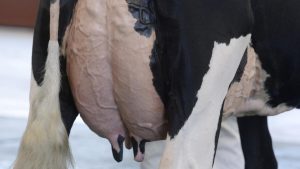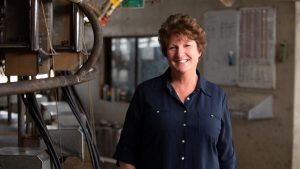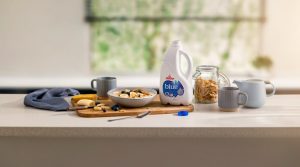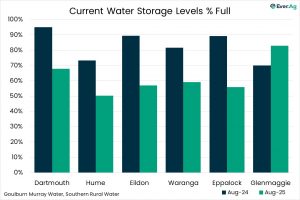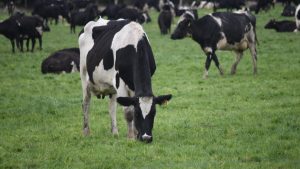
But Larry the lamb was anything but ordinary. Larry made history as the world’s first gender-selected sheep.
Scientists at the University of Sydney always knew they’d be getting a baby boy. They’d employed a process that sorted ram semen into male and female, and they chose to produce a male.
The scientists used a technique discovered in the USA in 1989 when Dr Larry Johnson developed a method to separate living female-producing (X-chromosome) and male-producing (Y-chromosome) sperm based on their DNA content.
Johnson had effectively turned nature on its head. Until then, it had been nature that determined whether you were born male or female.
Sexed livestock semen
The American scientists made their breakthrough using rabbits and then successfully applied the technology to cows and pigs.
Naturally, it was livestock industries that stood to be the biggest beneficiaries of this brave new world and it was dairy farmers who most embraced it.
They want female calves to replenish their milking herds.
Male calves, largely unwanted, are known as bobby calves and can be sold for slaughter as young as five days of age.
Dairy Australia estimates that last year nationwide, about 300,000 bobby calves met that fate.
Worldwide, there’s growing opposition to bobby calves. Many countries have banned the trade.
New Zealand is introducing tighter restrictions and many believe Australia will soon follow.
Reducing waste animals
Improving animal welfare is a major reason why more Australian dairy farmers are using “sexed” semen.
“The main sort of incentive to use the sexed semen was the plight of the poor male Jersey bobby calf. They don’t really have any value in our industry,” said Tess Butler, a veterinarian and dairy farmer at Jindivick east of Melbourne.
“Unfortunately, they get slaughtered at about five days old, off to the abattoirs, which is something that we don’t really agree with and we really want to change.”
Just now, it’s calving season. In the farm’s calf-rearing shed, there’s a growing number of young Jersey calves.
So far, their use of sexed semen is achieving better than expected results.
“Last year, we ran at about 10 per cent bulls, which is what we were kind of promised, which is great,” said Ms Butler.
“This year, we’ve only been calving for a week, but we’ve got about 5 per cent bull calves, so that’s amazing as well.”
“The technology has definitely got better over time,” said dairy farmer Rowen Foote.
“We’re seeing a lot better conception rates from the start of 2004 up to now. It has been massive.”
Mr Foote runs a large, family-owned dairy farm at Fish Creek in South Gippsland. Opposed to bobby calves, he was an early adopter of the use of sexed semen.
Gender selection also means he can sell surplus dairy heifers to the lucrative export market.
About a quarter of Australian dairy farmers are now using sexed semen. In the United Kingdom, the figure is now 50 per cent.
“So this whole area of sexed semen is evolving at a great rate, and primarily its been so much research and the success of conception rates that is driving that engagement,” said Paul Douglas of global company ST Genetics.
British dairy farmers got access to sexed semen in 1998 when UK company Cogent made the first commercial sales of sexed semen from dairy bulls.
In the early years, it was expensive to use, the conception rates weren’t always good and there was a limited range of available bovine genetics.
In 2017, US based-company ST Genetics bought a majority share in Cogent.
The company is rapidly expanding its semen sorting facilities around the globe.
“I think there’s 40 plus labs in 33 countries now, most of them working 24 hours a day, seven days a week,” said Peter Semmens, who heads up the company’s Australian branch.
“The product is getting better every day, and the discerning breeder out there or the discerning farmer is making some pretty astute decisions,” said Brad Aitken, whose company supplies genetics to livestock farmers across Australia.
Far-reaching benefits
To date, ST Genetics has focused on dairy genetics. But the company is targeting Australia’s beef industry, which is rebuilding after severe droughts and floods.
Breeding more females through gender selection can accelerate that rebound.
The company has other species in its sights. Sheep producers are embracing the use of sexed semen, and pork and goat producers are poised to join them.
In the future, gender selection could be used to bolster populations of endangered animals by producing more breeding females.
And this new frontier of animal production is getting closer to home. The company is experimenting with sorting dog semen.
“It could be some ideal working dogs that become involved in a sexed semen situation. Who knows?” said Mr Douglas.




